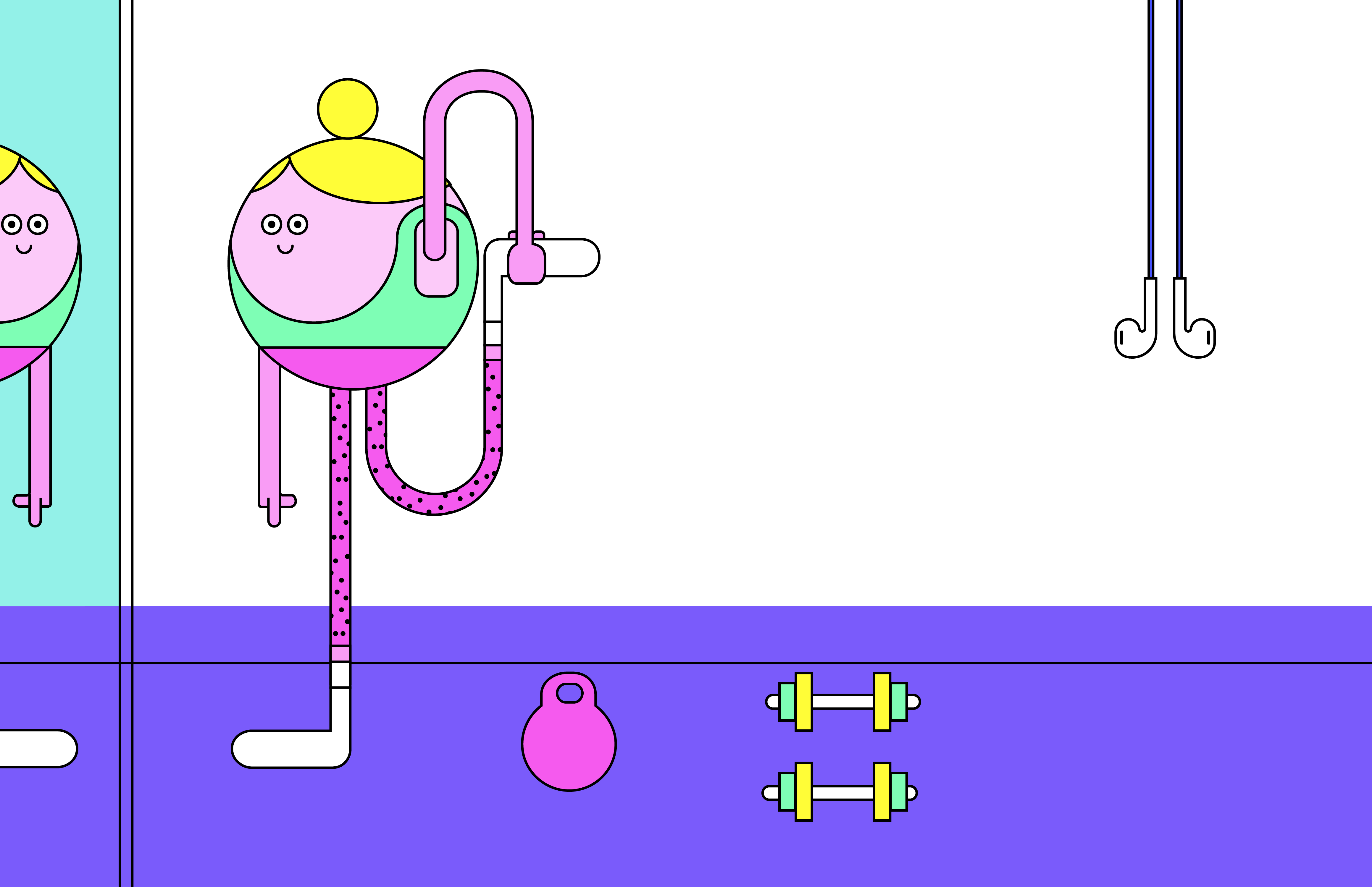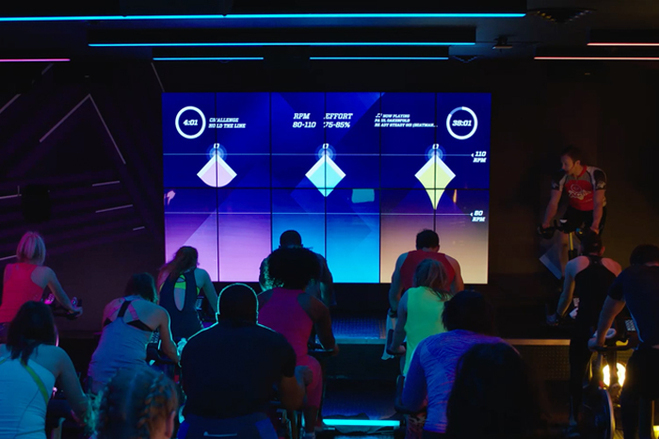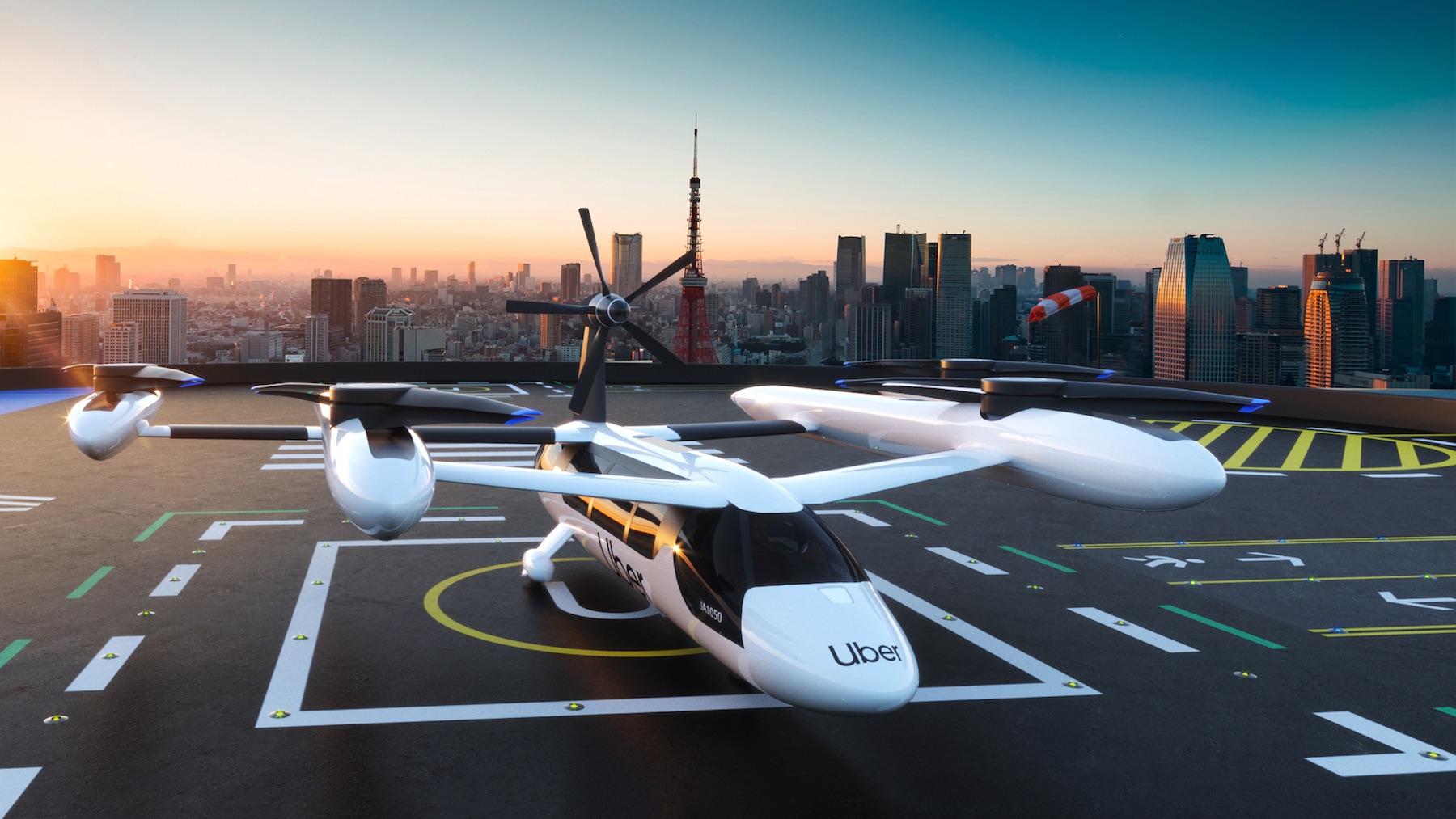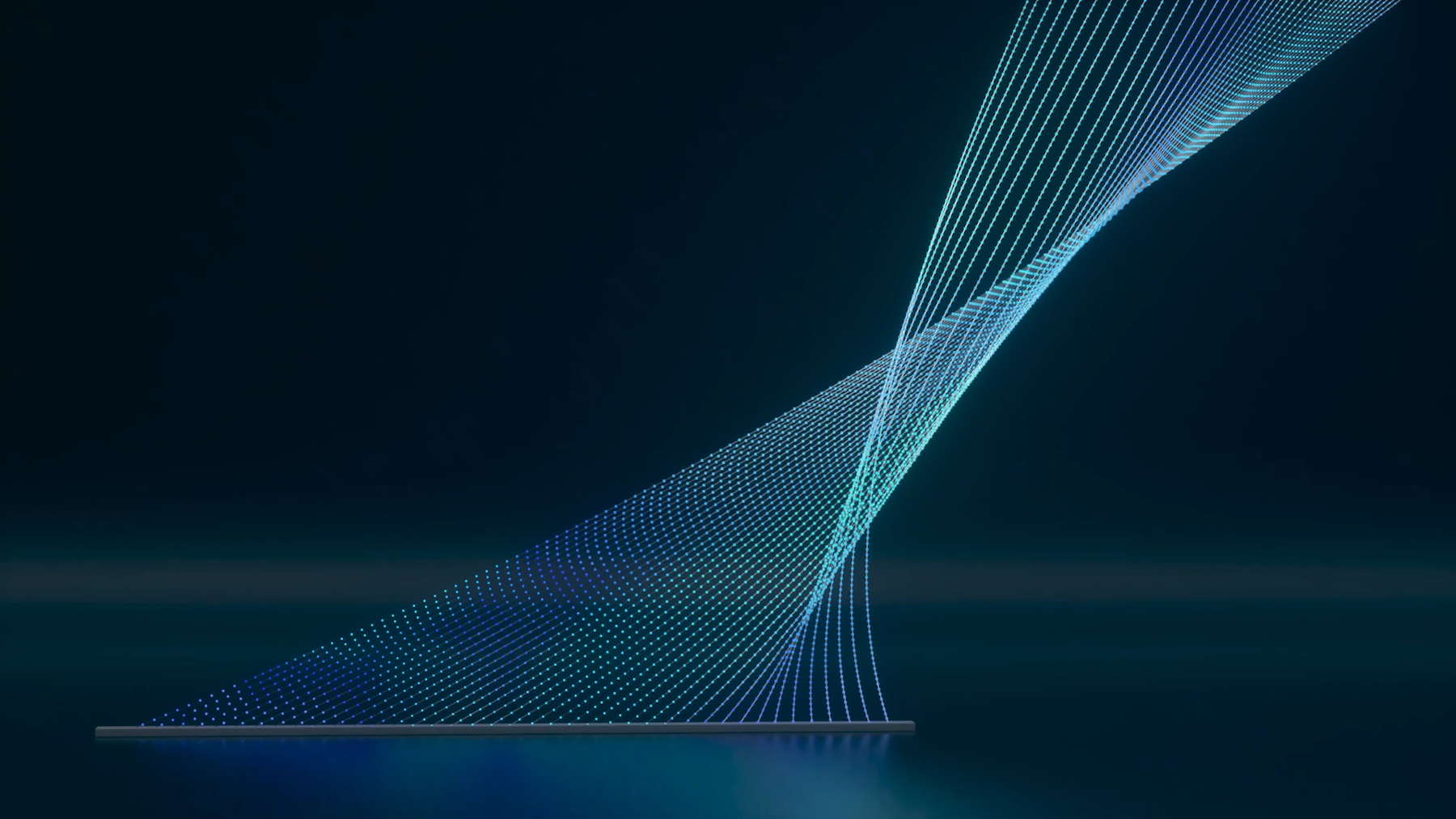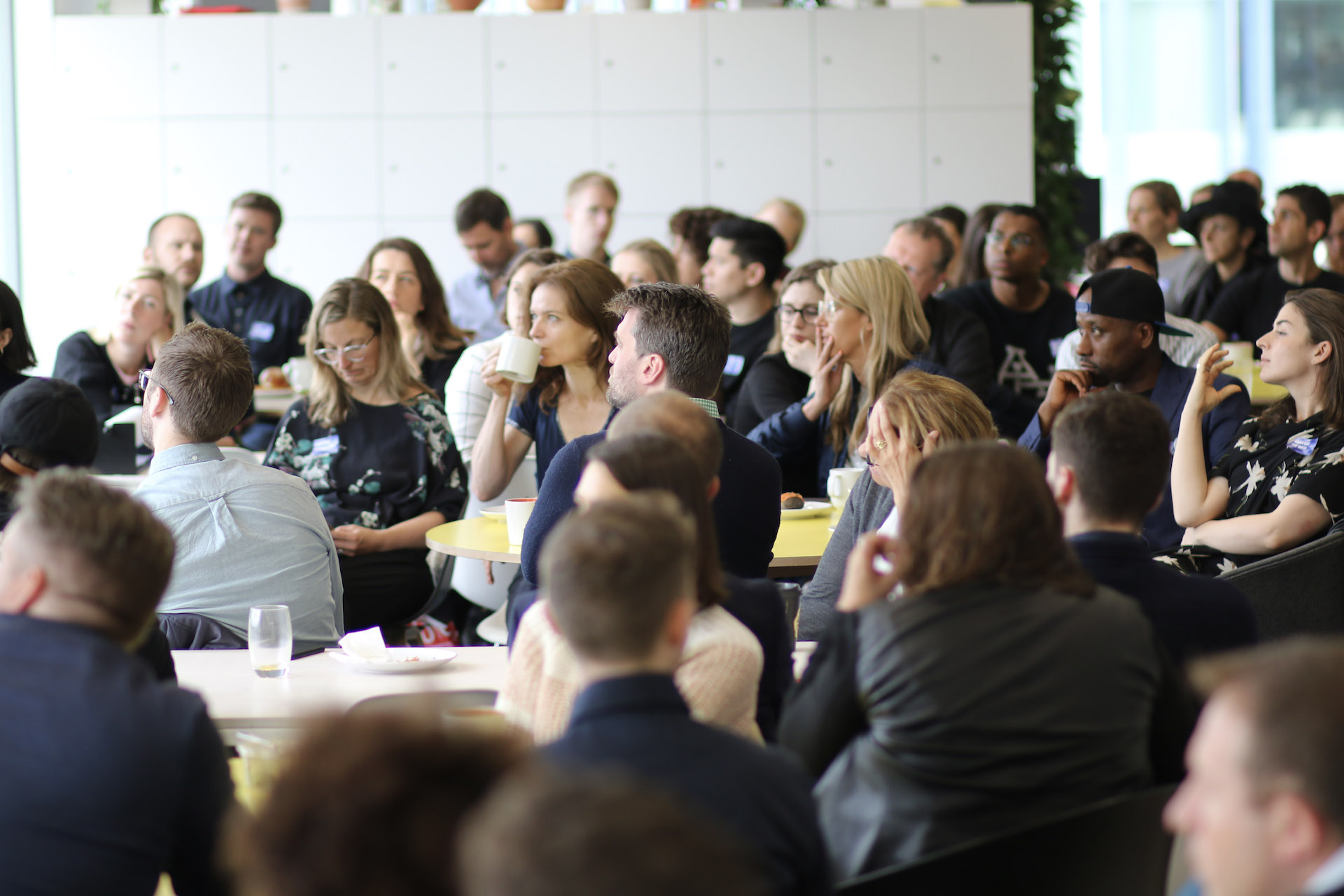A view inside: Virgin Active
4 minute read
Last month Virgin Active launched The Pack; a new group cycle
product created and built in collaboration with Wolff Olins.
Caroline Goodwin, Delivery Director at Wolff Olins and member of
The Pack team, had a chat with Andy Caddy, Group CIO and Dael
Williamson, Enterprise Architect about their experience of working
on the project.
1. What are your roles at Virgin Active?
Andy: I look after our Technology and Digital strategy across the
company. I am the sponsor for The Pack meaning that it’s my job to
get everyone bought in across nine countries and ensure that there
aren’t any major obstacles for Dael and the rest of the team.
Dael: I head up our Enterprise Architecture team and play a
leadership role in the technology strategy and vision for the
business globally. In terms of The Pack, I am the tech lead on the
software design and programme management in the UK and I also
coordinated the work of other territories involved, including South
Africa, Iberia, Italy and APAC.
2. What makes The Pack interesting?
Andy: This is the first product that we have developed that has had
a high technology component and a worldwide roll out capability.
This has meant that we’ve needed to overcome a number of logistical
challenges! Luckily, we are all united in trying to create a brilliantly
innovative experience for our members and so everyone has been
supportive in getting the product to launch.
Dael: We were innovators in group cycle 15 years ago and now,
for the first time, we have created our own cycle product that is
tech driven, and which we can bring to the mainstream. At an industry
level, I think we’ve created something that is going to push
data-driven, multi-sensory, group health experiences forward in
a big way; it’s really exciting to be part of something so unique
in such a busy space.
Through our test trials we’ve also found that the experience
offered by The Pack has widened the appeal of going to a traditional
group cycle class to many more people. We’ve already had great member
feedback where people are saying things like, “I don’t normally
like group cycle, but I would do this.” I think it’s the human
connection with your team that means that The Pack appeals to so
many more people. It’s no longer just a room full of solitary cyclists.
3. How does Virgin Active approach product
innovation differently from others companies?
Andy: We are fortunate to be in a global company that can draw on
different trends and cultures. Our product teams have the expertise
to create bespoke products and programming for our members where we
think there are gaps in the market. For example, last year we completely
reinvented functional training through the creation of The Grid –
designed to get people moving better, faster and more effectively.
This focus on creating our own innovations means that our members
get a genuinely unique experience.
4. How did you get your vision for The Pack
off the ground?
Dael: We had a broad ambition for what we wanted to do around group
cycle. Working with Wolff Olins was critical to help us consolidate
our thinking and come up with a brand-led concept that fitted our
product vision. Studio design was also a key focus for us and Wolf
Olins helped us incorporate fantastic lighting into the experience,
and also broaden our view on the longer term effects we could go on
to build into the class.
From a personal perspective, I needed the glue that would hold
this project together and Wolff Olins created the framework for the
Experience Manager, which has worked really well. It meant my team
could really focus on creating something technically feasible, while
Wolff Olins translated the vision into a UX story and prototype that
unified the teams and disciplines by showing them, very early on,
what was possible.
5. What role did the prototype play in preparing
you for the final build?
Dael: The real impact was on pace; it proved very quickly that we
could create software that drove the experience by connecting multiple
inputs like programming, music, biking data and put them together in
a really smart way to drive outputs like lights, sound and visual
display. In fact, it became our business case for the project because
people could see what we wanted to do really clearly and they were
excited by it.
6. What was your greatest challenge while
working on The Pack?
Andy: I would say the biggest challenge has been the sheer scale of
launching a global product into six different countries, across 30
studios, with 100+ instructors in a way that was consistent but still
had room to have a local flavour. Like The Grid, we want The Pack to
be a signature product for us so ensuring that it lands well is
incredibly important to us.
7. How did you overcome this?
Andy: Lots of hard work by Dael! Using different music suppliers for
different regions has helped to ensure that local tastes are catered
for. Ensuring each country had control over their own studio builds,
but within a central brand means you will always know you are in a
Pack studio but it will have the essence of the country you are in
as well.
Dael: By keeping the different workstreams focused on specific
components of the product – such as music, studio design and training
– so that everyone was focused on their area of expertise and could
really own the delivery of each component. This created a great
cross-functional team. We learnt very quickly how differently
disciplines approached their work and it’s really interesting and
useful to understand and cater for these different dynamics.
8. What are you most proud of having achieved
on The Pack?
Andy: Bringing together so many different workstreams into a single
coherent product that really works. In the first real member class
that I participated in, there was a distinct buzz and lots of
conversation between teams afterwards.
Dael: Being a tech guy, I’m blown away by the product we’ve created.
There are many complicated elements, but they are so well done, that
the ultimate experience is simple and really enjoyable.
9. How do you think creativity enhances
technology, and vice versa?
Dael: I think that there are two parts to this, the first being that
creativity challenges the boundaries of technology and forces tech
teams to take it up a notch. The second is that technology is what
brings the creativity to life and moves ideas beyond images into
something interactive and experiential.
Andy: Without the creative input we had from Wolff Olins, we would
have had a room full of bikes throwing out data. It would have been
technically impressive, but as an experience it would be limited.
What we have ended up with is an immersive group experience that
brings all that technology to life.
10. Finally, how do you think technology will
change the world of fitness over the next 5-10 years?
Andy: As the products mature, technology focus (devices and products)
will give way to an insight focus. Today we don’t get excited by the
smartphone anymore, it’s the apps that enable our lives; in the next
five years the focus on wearables and watches will give way to data
and insight. I think this is potentially the largest change that we
will go through – smart apps and bots giving you actionable information
about your health and fitness.
Dael: Although a lot of focus has been on wearables in the press,
I think it’s actually the ingredients behind that tech - the data and
biometric insights - that will transform the fitness industry.
I think the current trend for what we call ‘blue-line fever’, where
everyone is measuring and tracking their activity in devices and apps
will spread, and enable smarter equipment in health clubs like our own.
Read the full
case study


